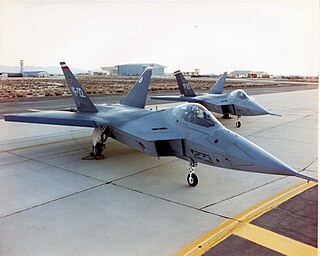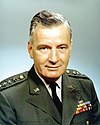
Redstone Arsenal is a United States Army base adjacent to Huntsville, Alabama in the Wheeler National Wildlife Refuge. A census-designated place in Madison County, Alabama, United States, it is part of the Huntsville-Decatur Combined Statistical Area. The Arsenal is a host to over 75 tenant agencies including the Department of Defense (DoD), Department of Justice (DOJ), the Federal Bureau of Investigation (FBI), and NASA's largest field center, the Marshall Space Flight Center.
The Combat Capabilities Development Command Soldier Center, formerly the United States Army Natick Soldier Research, Development and Engineering Center, is a military research complex and installation in Natick, Massachusetts, charged by the U.S. Department of Defense with the research and development of food, clothing, shelters, airdrop systems, and other servicemember support items for the U.S. military. It is a component unit of the United States Army Combat Capabilities Development Command and is a tenant unit of the United States Army Natick Soldier Systems Center (SSC). The installation includes facilities from all the military services, not just the Army, and is so configured to allow cross-service cooperation and collaboration both within the facility and with the many academic, industrial and governmental institutions in the Greater Boston Area.

The Air Force Materiel Command (AFMC) is a Major Command (MAJCOM) of the United States Air Force (USAF). AFMC was created on July 1, 1992, through the amalgamation of the former Air Force Logistics Command (AFLC) and the former Air Force Systems Command (AFSC).

The United States Army Aviation and Missile Command (AMCOM) develops, acquires, fields and sustains aviation, missile and unmanned aerial vehicles. AMCOM is primarily responsible for lifecycle management of army missile, helicopter, unmanned ground vehicle and unmanned aerial vehicle weapon system. The central part of AMCOM's mission involves ensuring readiness through acquisition and sustainment support for aviation systems, missile systems, and test, measurement, and diagnostic equipment (TMDE) throughout their life cycle. The command is headquartered at Redstone Arsenal in Huntsville, Alabama, has a 2019 "budget of more $3.7 billion, and a global workforce of more than 15,000 military and civilian employees".

The Air Force Systems Command (AFSC) is an inactive United States Air Force Major Command. It was established in April 1951, being split off from Air Materiel Command. The mission of AFSC was Research and Development for new weapons systems.

The United States Army Training and Doctrine Command (TRADOC) is a major command of the United States Army headquartered at Fort Eustis, Virginia. It is charged with overseeing training of Army forces and the development of operational doctrine. TRADOC operates 37 schools and centers at 27 different locations. TRADOC schools conduct 1,304 courses and 108 language courses. The 1,304 courses include 516,000 seats for 443,231 soldiers; 36,145 other-service personnel; 8,314 international soldiers; and 28,310 civilians.

The Naval Air Systems Command (NAVAIR) provides materiel support for aircraft and airborne weapon systems for the United States Navy. It is one of the Echelon II Navy systems commands (SYSCOM), and was established in 1966 as the successor to the Navy's Bureau of Naval Weapons.

The United States Army Chemical Materials Activity (CMA) is a separate reporting activity of the United States Army Materiel Command (AMC). Its role is to enhance national security by securely storing the remaining U.S. chemical warfare materiel stockpiles, while protecting the work force, the public and the environment to the maximum extent.
Blue Grass Army Depot (BGAD) is a U.S. Army Joint Munitions Command storage facility for conventional munitions and chemical weapons. The facility is located in east central Kentucky, southeast of the cities of Lexington and Richmond, Kentucky. The 14,494-acre (58.66 km2) site, composed mainly of open fields and wooded areas, is used for munitions storage, repair of general supplies, and the disposal of munitions. The installation is used for the storage of conventional explosive munitions as well as assembled chemical weapons. The depot primarily is involved in industrial and related activities associated with the storage and maintenance of conventional and chemical munitions.

The reorganization plan of the United States Army was implemented from 2006 to 2016 under the direction of the Brigade Modernization Command. This effort formally began in 2006 when General Peter Schoomaker was given the support to move the Army from its Cold War divisional orientation to a full-spectrum capability with fully manned, equipped and trained brigades; this effort was completed by the end of 2016. It has been the most comprehensive reorganization since World War II and included modular combat brigades, support brigades, and command headquarters, as well as rebalancing the active and reserve components.

The Marine Corps Systems Command (MCSC) is the acquisition command of the United States Marine Corps, made up of Marines, sailors, civilians and contractors. As the only systems command in the Marine Corps, MCSC serves as Head of Contracting Authority and exercises technical authority for all Marine Corps ground weapon and information technology programs. MCSC is headquartered at Marine Corps Base Quantico.
The Naval Facilities Engineering Systems Command (NAVFAC) is the United States Navy's engineering systems command, providing the Navy and United States Marine Corps with facilities and expeditionary expertise. NAVFAC is headquartered at the Washington Navy Yard and is under the command of the Chief of Civil Engineers RADM Dean VanderLey

The United States Army Security Assistance Command (USASAC) – "the 'Army's Face to the World'" - implements security assistance programs, including Foreign Military Sales (FMS) of defense articles and services to eligible foreign governments. In addition, USASAC is responsible for the US Army's security assistance information management and financial policy and provides logistics guidance to the army's security assistance community. The command also supports the U.S. government's emergency assistance, humanitarian relief, and Operations Other Than War, including peacekeeping operations by the United Nations. The USASAC traces its origins to the Army's technical service era, and was designated a major subordinate command (MSC) of the U.S. Army Materiel Command (AMC) in 1975. Since its formation, USASAC has supported major US military operations and supported international peacekeeping and humanitarian efforts. The USASAC's motto is "Strength in Cooperation."

The United States Army Installation Management Command (IMCOM) is a support formation of the United States Army responsible for the day-to-day management of Army installations around the globe. Army garrisons are communities that provide many of the same types of services expected from any small city. IMCOM is a major subordinate command of U.S. Army Materiel Command (AMC). IMCOM is headquartered at Fort Sam Houston.

The Communications-Electronics Command (CECOM) is a Life Cycle Management Command (LCMC) of the United States Army based at Aberdeen Proving Ground, Maryland, United States. It is one of four such commands under the Army Materiel Command (AMC), and is the Army's provider and maintainer of Command, Control, Communications, Computers, Cyber, Intelligence, Surveillance and Reconnaissance (C5ISR) capabilities.

United States Army Materiel Systems Analysis Activity (AMSAA) is an analysis organization of the United States Army. AMSAA's overall goal is to provide soldiers with the best U.S. Army materiel possible. AMSAA supports the U.S. Army by conducting systems and engineering analyses to support decisions on technology, materiel acquisitions, and the designing, developing and sustaining of U.S. Army weapon systems.

Pueblo Depot Activity(PUDA), formerly known as the Pueblo Ordnance Depot and the Pueblo Army Depot, was a U.S. Army ammunition storage and supply facility. Responsibility for the depot fell upon the United States Army Ordnance Corps, and the first civilians were hired in 1942 as operations began. The mission quickly expanded to include general supplies as well. It is a 24,202-acre (97.94 km2) site located 14 miles (23 km) east of Pueblo, Colorado at 38°19′37.07″N104°20′22.4″W. In 1945 they began to receive mass amounts of equipment returning from the combat theaters of World War II. Therefore, the mission expanded yet again to include the maintenance and refurbishing of artillery, fire control, and optical material. In 1951 the depot assumed responsibility to distribute U.S. Air Force ammunition for an eight-state area, as well as storage of strategic and critical materials for the General Services Administration (GSA). They were also tasked to rebuild and provide on-site maintenance support for guided missiles, ensure calibration and maintenance of electronic test equipment and radio-controlled aerial targets. They would also provide specialized training for new Army equipment as needed. In 1952, Rocky Mountain Arsenal in Denver, Colorado transferred chemical agents and chemical munitions to Pueblo Army Depot for secure storage. In 1974 Pueblo Army Depot was redesignated as Pueblo Depot Activity.

The Assistant Secretary of the Army for Installations, Energy and Environment is a civilian office within the United States Department of the Army.
The preliminary 1991 Base Realignment and Closure Commission list was released by the United States Department of Defense in 1991 as part of the ongoing Base Realignment and Closure Commission. The list recommended closing 28 major United States military bases throughout the nation. This was the last Base Realignment and Closure Commission prior to the dissolution of the Soviet Union ending the Cold War.

403d Army Field Support Brigade (AFSB), headquartered at Camp Henry, Daegu, Republic of Korea, delivers U.S. Army Materiel Enterprise to supported forces throughout the Korean and Japanese Theaters of Operations.









































